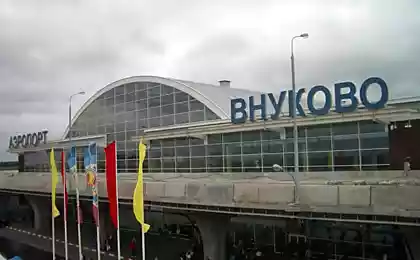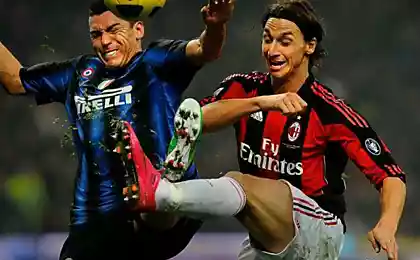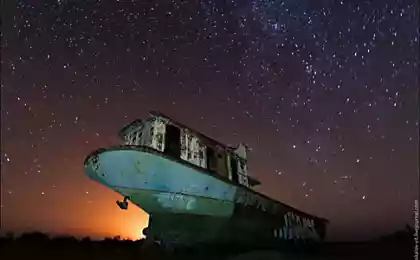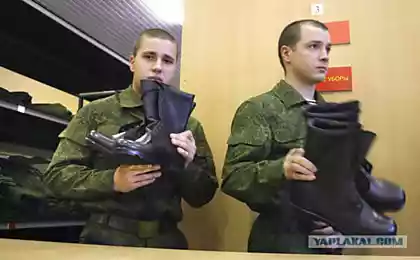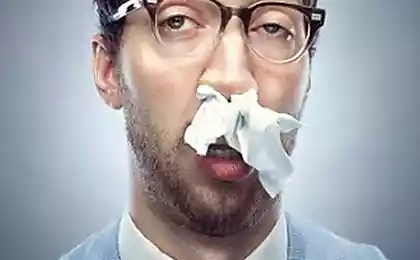1592
Afghanistan '50s and' 60s
I propose to look at how Afghanistan was in the 50s - 60s gody.Mnogie probably thought that now would be pictures of wild, backward and medieval country with a worse living conditions than they are now? Not at all.
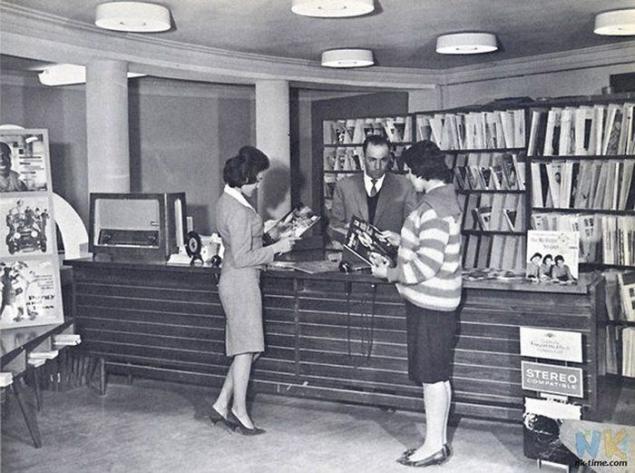
During his visit to Afghanistan, the British defense minister Layyam Fox caused a wave of criticism, calling the country "a broken country of the 13th century." But the main conviction was not that he was wrong and that he was too blunt. It is hardly the first Westerners who called Afghanistan the Middle Ages. Many have considered Afghanistan a country without a government in which chaos is literally embedded in the rocks and hills. And looking at the videos and photos from Afghanistan, sometimes it seems that the country really has not got out of the Middle Ages.
However, Afghanistan has not always been so. Once a woman is doing a career in medicine, he went to the movies and the universities of Kabul. Factories in the suburbs made of fabric and other products. There was a law and order, and the government could carry out major infrastructure projects, such as hydroelectric power and roads, though not without help from the outside. Common people had hope for the future, the fact that education will open new opportunities. All of this was destroyed by thirty years of war.
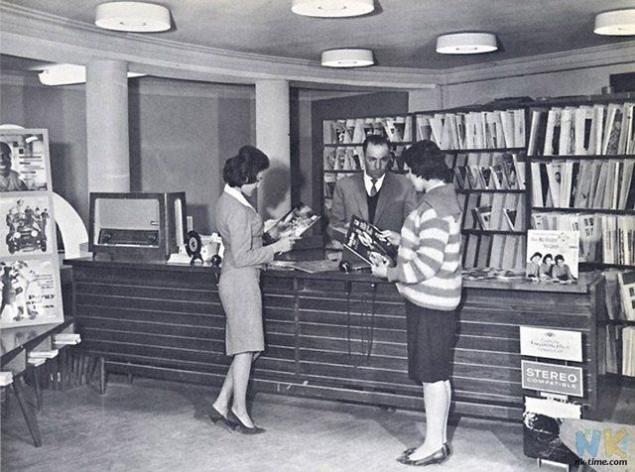
1. Campus of the University of Kabul has not changed since then. People have changed. The 50-yhi 60s, students prefer Western style clothing, and young people of both sexes were talking relatively freely. (MOHAMMAD QAYOUMI)

2. Today, women hide the face and most of his body, even in the capital. After just half a century, men and women live in different worlds. (MOHAMMAD QAYOUMI)

3. In the '50s and' 60s women could build a career in areas such as medicine. Today, the school provides education for women are targeted by constant attacks. (MOHAMMAD QAYOUMI)

4. Previously, education was highly valued. If you went to school and get good grades, you have a chance to receive higher education, perhaps even study abroad, to become part of the middle class. Today, people have become more cynical. They do not see the connection between education and a better life. Instead, they see that those who have attained power and wealth achieved this illegally. (MOHAMMAD QAYOUMI)

5. This incubator in a hospital in Kabul in the 60s is very different from those that can be found today. Now two premature babies are in the same incubator, and in the hospital did not have enough equipment. (MOHAMMAD QAYOUMI)

6. In the 1960s, almost half of Afghanistan's population had access to health care, it is now only a few have access. Today, hospitals are overcrowded, and one in four children die before their fifth birthday. (MOHAMMAD QAYOUMI)

7. Research Center for the production of vaccines in Kabul in the 1960s. Today, health services are limited by several factors, including the lack of electricity. Less than 20% of Afghans have access to electricity, many homes are illuminated by kerosene lamps, and struggling with the heat weaknesses fans. (MOHAMMAD QAYOUMI)

8. Once the central government of Afghanistan to carry out various programs of rural life, including the one that is shown in this photo: nurses sent jeeps to remote villages to treat the inhabitants from diseases such as cholera. It's only because of the security problems is impossible. On the government health workers are often attacked by groups of militants who want to create unrest and terror in society. (MOHAMMAD QAYOUMI)

9. Once in Afghanistan were boy- and Girl Scouts. In the 1950s and 1960s, these organizations have been popular in the United States: the boys and girls in primary and secondary schools learned about nature, camping, and public safety. (MOHAMMAD QAYOUMI)
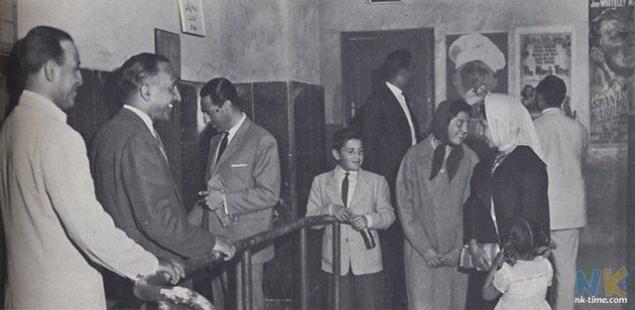
10. In this theater when it was possible to see a Hollywood movie. (MOHAMMAD QAYOUMI)

11. On this playground was always a lot of children and mothers. Now in city parks can be found only women, children drive safe here. (MOHAMMAD QAYOUMI)

12 light and medium industry, like this plant in the outskirts of Kabul, once served much hope for the Afghan economy. But today, as you can work without electricity? Now Afghanistan is only a small workshops; Afghanistan's biggest export now become opium. (MOHAMMAD QAYOUMI)
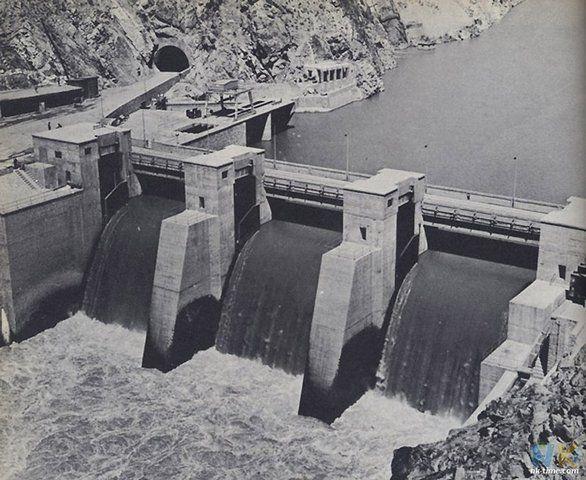
13. With the help of Germany's Afghanistan has built its first large hydroelectric power plant (pictured) in the early 50s. While it was a work of art. Now she is still working, but, unfortunately, over the past eight years, the Afghan government has not built any power station. The only major complete government project is the expansion of the transport line to Uzbekistan. (MOHAMMAD QAYOUMI)
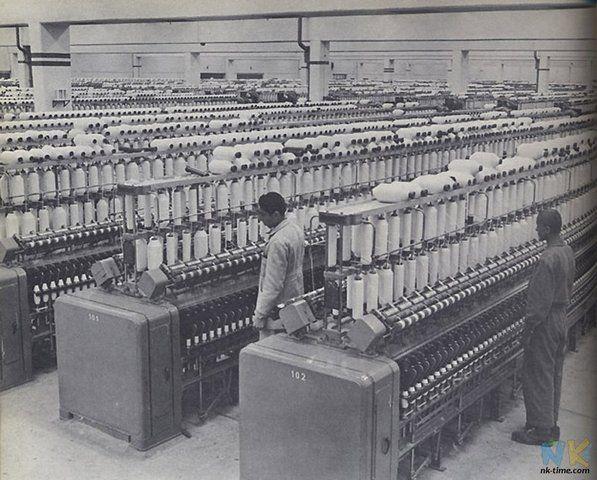
14. Earlier in Afghanistan were enterprises of light and medium industries, such as the garment factory on the photo. Then there was a sense that Afghanistan has a bright future - its economy is flourishing. Then, most of the cotton processed at a similar plant was grown by hand. But 30 years of war have destroyed the industry and supply chain. (MOHAMMAD QAYOUMI)

15. Compared to the 50-bubbled and 60s years, fewer women now work outside the home, and their look is much more conservative than what you see in this photo. (MOHAMMAD QAYOUMI)
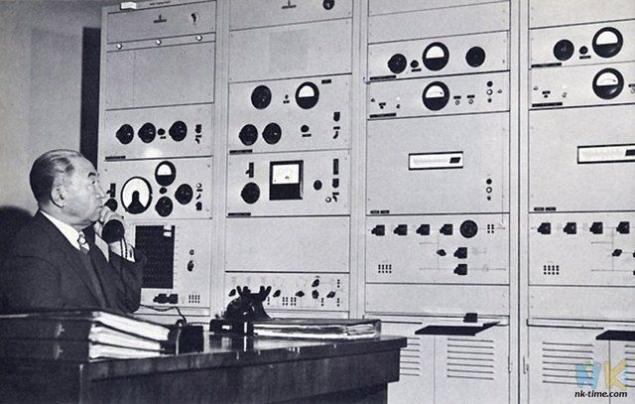
16. On the radio in the 60s you could hear the world and local news, music programs, jokes, political debates, and even children's programs. Radio Kabul (whose old office you can see in this photo) was launched in the 1930s. (MOHAMMAD QAYOUMI)

17. In today's Afghanistan, a number of private radio stations, satellite and television programs. This is a real outlet. However, access to radio and television dependent on electricity and, therefore, their audience is limited. Only a few families have generators that can be used to gain access to electricity. (MOHAMMAD QAYOUMI)

18. During the annual Independence Day of Afghanistan Kabul nine days illuminates the lights at night in late August - early September, in the 60s. Now the city at night is dark. Even riding in the car at night scary. On the streets almost no lights, the streets are empty, the night-life can not be considered. (MOHAMMAD QAYOUMI)
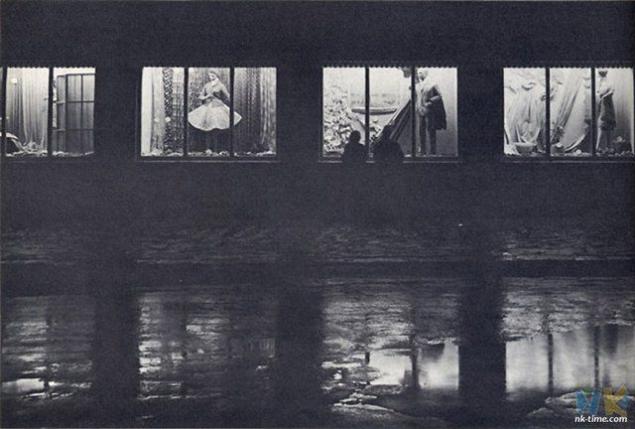
19. The clothing boutique was formerly common to Kabul. (MOHAMMAD QAYOUMI)

20. As well as music stores, yielding Afghan teenagers rhythms and energy of the music of the Western world. (MOHAMMAD QAYOUMI)

21. Today, furniture stores, like this one - a real rarity. Most of the furniture is made outside of Afghanistan, and only a small percentage of Afghans have good furniture in their homes. (MOHAMMAD QAYOUMI)

22. Who in Kabul remains a fruit markets. (MOHAMMAD QAYOUMI)

23. The level of education of the administration of Kabul is now much lower than 50 years ago, when this photo was made. Then the majority of officials had a master's degree or PhD. Western style of dress was the norm. Today the meeting of the government in Kabul are between men with long beards, turbans and traditional robes. (MOHAMMAD QAYOUMI)

24. The once strong and active defense forces Afghanistan is now history. After Soviet troops left Afghanistan, Pakistan destroyed the country's armed forces. Since the civil war of the 1990s, the constant pressure from the Taliban and US intervention, the local security forces are very difficult to organize, even taking into account that security remains the main problem of the country. (MOHAMMAD QAYOUMI)
via source

During his visit to Afghanistan, the British defense minister Layyam Fox caused a wave of criticism, calling the country "a broken country of the 13th century." But the main conviction was not that he was wrong and that he was too blunt. It is hardly the first Westerners who called Afghanistan the Middle Ages. Many have considered Afghanistan a country without a government in which chaos is literally embedded in the rocks and hills. And looking at the videos and photos from Afghanistan, sometimes it seems that the country really has not got out of the Middle Ages.
However, Afghanistan has not always been so. Once a woman is doing a career in medicine, he went to the movies and the universities of Kabul. Factories in the suburbs made of fabric and other products. There was a law and order, and the government could carry out major infrastructure projects, such as hydroelectric power and roads, though not without help from the outside. Common people had hope for the future, the fact that education will open new opportunities. All of this was destroyed by thirty years of war.

1. Campus of the University of Kabul has not changed since then. People have changed. The 50-yhi 60s, students prefer Western style clothing, and young people of both sexes were talking relatively freely. (MOHAMMAD QAYOUMI)

2. Today, women hide the face and most of his body, even in the capital. After just half a century, men and women live in different worlds. (MOHAMMAD QAYOUMI)

3. In the '50s and' 60s women could build a career in areas such as medicine. Today, the school provides education for women are targeted by constant attacks. (MOHAMMAD QAYOUMI)

4. Previously, education was highly valued. If you went to school and get good grades, you have a chance to receive higher education, perhaps even study abroad, to become part of the middle class. Today, people have become more cynical. They do not see the connection between education and a better life. Instead, they see that those who have attained power and wealth achieved this illegally. (MOHAMMAD QAYOUMI)

5. This incubator in a hospital in Kabul in the 60s is very different from those that can be found today. Now two premature babies are in the same incubator, and in the hospital did not have enough equipment. (MOHAMMAD QAYOUMI)

6. In the 1960s, almost half of Afghanistan's population had access to health care, it is now only a few have access. Today, hospitals are overcrowded, and one in four children die before their fifth birthday. (MOHAMMAD QAYOUMI)

7. Research Center for the production of vaccines in Kabul in the 1960s. Today, health services are limited by several factors, including the lack of electricity. Less than 20% of Afghans have access to electricity, many homes are illuminated by kerosene lamps, and struggling with the heat weaknesses fans. (MOHAMMAD QAYOUMI)

8. Once the central government of Afghanistan to carry out various programs of rural life, including the one that is shown in this photo: nurses sent jeeps to remote villages to treat the inhabitants from diseases such as cholera. It's only because of the security problems is impossible. On the government health workers are often attacked by groups of militants who want to create unrest and terror in society. (MOHAMMAD QAYOUMI)

9. Once in Afghanistan were boy- and Girl Scouts. In the 1950s and 1960s, these organizations have been popular in the United States: the boys and girls in primary and secondary schools learned about nature, camping, and public safety. (MOHAMMAD QAYOUMI)

10. In this theater when it was possible to see a Hollywood movie. (MOHAMMAD QAYOUMI)

11. On this playground was always a lot of children and mothers. Now in city parks can be found only women, children drive safe here. (MOHAMMAD QAYOUMI)

12 light and medium industry, like this plant in the outskirts of Kabul, once served much hope for the Afghan economy. But today, as you can work without electricity? Now Afghanistan is only a small workshops; Afghanistan's biggest export now become opium. (MOHAMMAD QAYOUMI)

13. With the help of Germany's Afghanistan has built its first large hydroelectric power plant (pictured) in the early 50s. While it was a work of art. Now she is still working, but, unfortunately, over the past eight years, the Afghan government has not built any power station. The only major complete government project is the expansion of the transport line to Uzbekistan. (MOHAMMAD QAYOUMI)

14. Earlier in Afghanistan were enterprises of light and medium industries, such as the garment factory on the photo. Then there was a sense that Afghanistan has a bright future - its economy is flourishing. Then, most of the cotton processed at a similar plant was grown by hand. But 30 years of war have destroyed the industry and supply chain. (MOHAMMAD QAYOUMI)

15. Compared to the 50-bubbled and 60s years, fewer women now work outside the home, and their look is much more conservative than what you see in this photo. (MOHAMMAD QAYOUMI)

16. On the radio in the 60s you could hear the world and local news, music programs, jokes, political debates, and even children's programs. Radio Kabul (whose old office you can see in this photo) was launched in the 1930s. (MOHAMMAD QAYOUMI)

17. In today's Afghanistan, a number of private radio stations, satellite and television programs. This is a real outlet. However, access to radio and television dependent on electricity and, therefore, their audience is limited. Only a few families have generators that can be used to gain access to electricity. (MOHAMMAD QAYOUMI)

18. During the annual Independence Day of Afghanistan Kabul nine days illuminates the lights at night in late August - early September, in the 60s. Now the city at night is dark. Even riding in the car at night scary. On the streets almost no lights, the streets are empty, the night-life can not be considered. (MOHAMMAD QAYOUMI)

19. The clothing boutique was formerly common to Kabul. (MOHAMMAD QAYOUMI)

20. As well as music stores, yielding Afghan teenagers rhythms and energy of the music of the Western world. (MOHAMMAD QAYOUMI)

21. Today, furniture stores, like this one - a real rarity. Most of the furniture is made outside of Afghanistan, and only a small percentage of Afghans have good furniture in their homes. (MOHAMMAD QAYOUMI)

22. Who in Kabul remains a fruit markets. (MOHAMMAD QAYOUMI)

23. The level of education of the administration of Kabul is now much lower than 50 years ago, when this photo was made. Then the majority of officials had a master's degree or PhD. Western style of dress was the norm. Today the meeting of the government in Kabul are between men with long beards, turbans and traditional robes. (MOHAMMAD QAYOUMI)

24. The once strong and active defense forces Afghanistan is now history. After Soviet troops left Afghanistan, Pakistan destroyed the country's armed forces. Since the civil war of the 1990s, the constant pressure from the Taliban and US intervention, the local security forces are very difficult to organize, even taking into account that security remains the main problem of the country. (MOHAMMAD QAYOUMI)
via source


